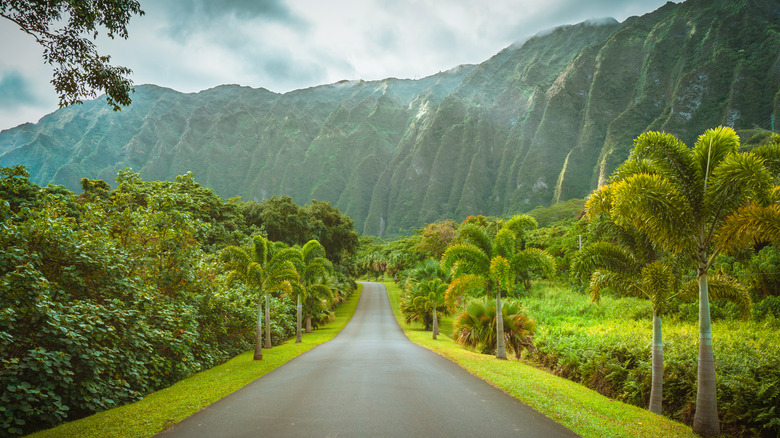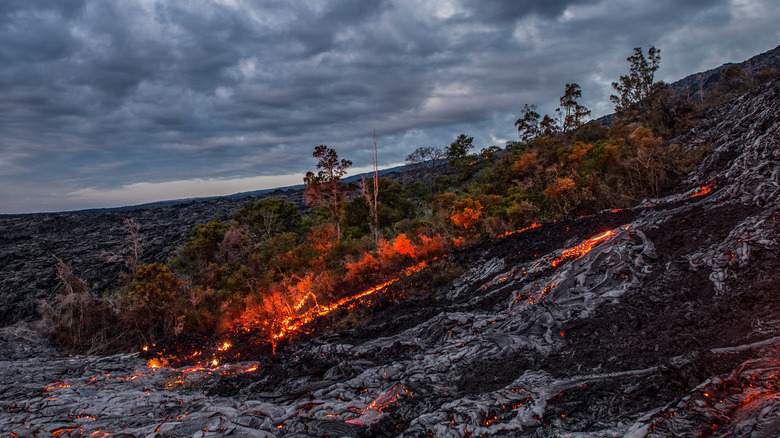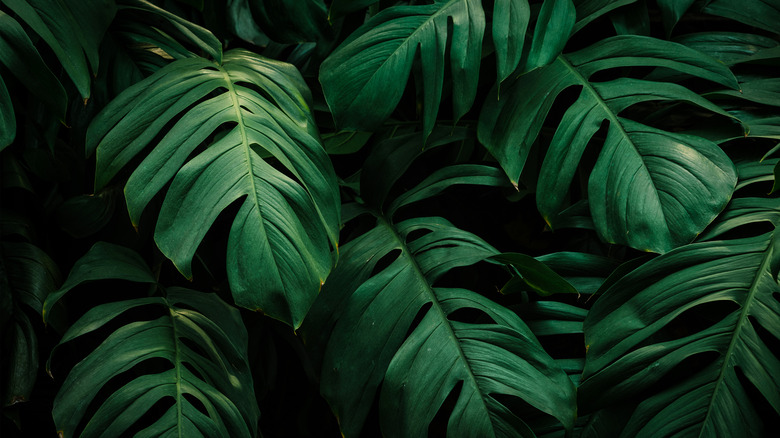This Once-Believed Extinct Plant Was Found In A Hawaiian Crater
In March 2021, Kallie Barnes, a technician at the Three Mountain Alliance, trekked in a crater at an isolated part of uka Kona in Hawaii. She was on a mission to collect seeds on Kamehameha Schools land. On the journey, she made a startling discovery. A rare plant that scientists thought was extinct still inhabited the area (per Hawaii Public Radio). In an October press release from the Kamehameha Schools, the State of Hawaiʻi Department of Land and Natural Resources (DLNR), and Three Mountain Alliance (TMA), a small group of the species Delissea argutidentata offers hope for ecological restorations in the area (via Kamehameha Schools).
Colleen Cole, a coordinator at TMA, said (via Kamehameha Schools), "This was such an inspirational event that means now we can reintroduce this plant in large numbers to its former range, reminding us to remain hopeful and vigilant." Restoration efforts soon went underway after the discovery, with seeds extracted from the plant in the hope of seeing Delissea proliferate once again, per CNN.
The Plant's Decline
In the 1900s, Delissea plants awed naturalists with their crowned leaves and majestic heights of up to 35 feet. At the time, the plant was abundant in the area, but between then and the 1970s, the population steadily declines, per Hawaii Public Radio. Climate change has altered the ecosystem in Hawaii since the early 20th century, with rising temperatures allowing invasive species like California shrubs and grasses to push out indigenous plant life. The wildfire risks are heightened by their presence, therefore creating further threats to native flora (via the State of Hawaii).
In the 1970s, Delissea argutidentata was seen for the last time on the property of the uka Kona area. At the time, there were only three plants, and they were kept within enclosures made by a former occupant of the land. Cattle had fed on the tops of the plants, resulting in damage from which Delissea couldn't regenerate. Researchers attributed this to the dense grasses in the region. In 1992, a single plant was found in Puʻu Waʻawaʻa, but it died only ten years later (per Kamehameha Schools).
What the Future Holds for Hawaii's Plants
Given the layered problems of climate change, the state of Hawaii is working toward "High-Impact Actions," which entail reducing greenhouse gas emissions, conserving coastal waters, and restoring trees and other native flora (via the State of Hawaii). Between 2015-2016, the heat wave was so strong in Honolulu that residents were straining the electrical grids with their use of air conditioning. In 2019, however, the temperature reached record heights in O'ahu, and Honolulu experienced its hottest day in recorded history (per the State of Hawaii). In light of these escalating changes, native plant restoration must be part of a holistic solution.
Out of the 16 Delissea species known to scientists, two are endangered while the rest are extinct. The discovery of argutidentata was thus a ray of light for researchers and environmentalists. Many who are involved with the project are optimistic about the future of the native plant. Relaying this message of hope, Colleen Cole said (via Kamehameha Schools) "In Hawaiʻi, there is often much focus on loss – loss of species, forest, sacred places – and maybe that is human nature but the Delissea reminds us to always nurture and make room for hope and discovery."


